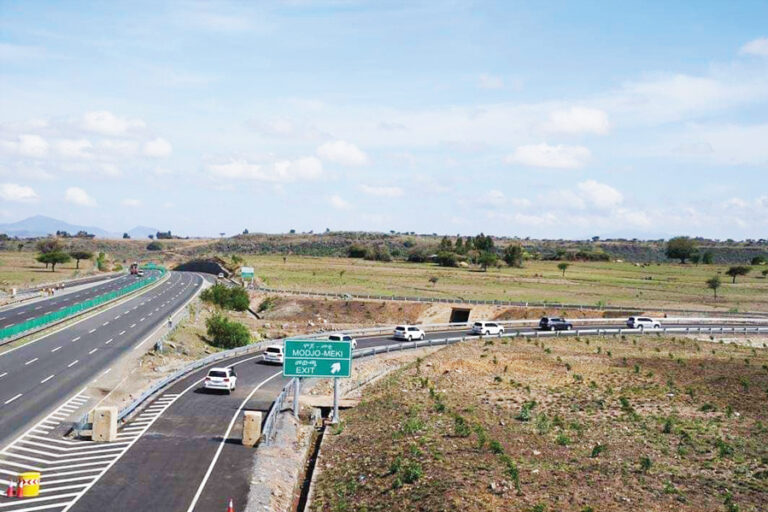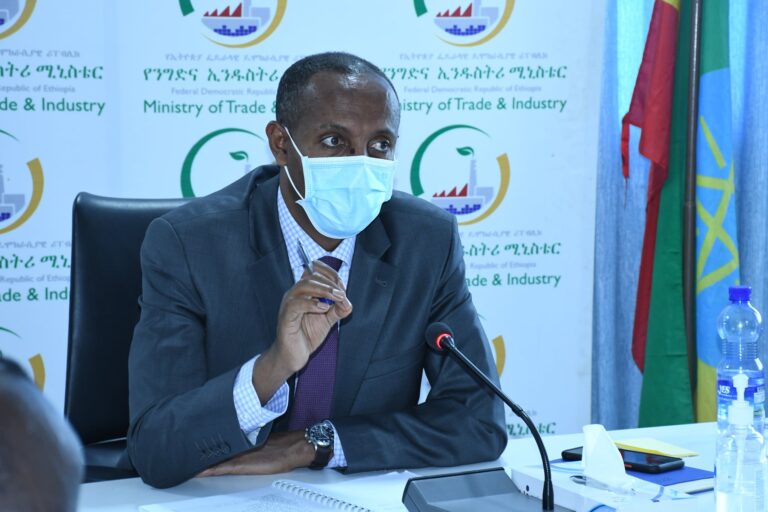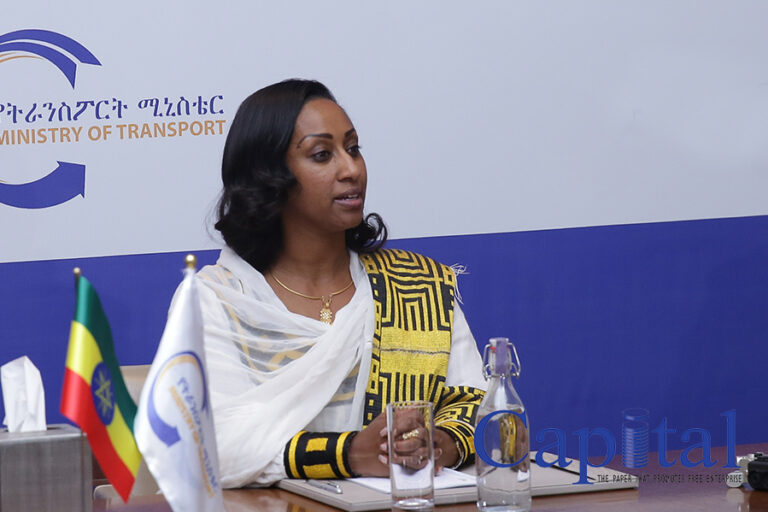Ethiopia inaugurated the Modjo-Meki-Batu 92 km road, completing the first phase of the country’s contribution to Trans-Africa Highway in the presence of high government officials and other multinational organization heads. Farmers can now create market linkages easily, and transportation services will be more efficient. With the finalization of the project it will increase the flow of tourism and strengthening of industrial parks. Completion of the highway will pave the way for the country’s economic, social and political integration across the continent.
Industrialists blast gov’t for equal ground
During the closed forum that was held on Wednesday, local industrialists claim that government is not providing equal treatments for the Ethiopian investors on FDIs, Capital learnt.
Sources revealed that on the meeting held at Sheraton Addis on Wednesday May 5, local manufacturers have expressed their disappointment on the behavior of government which is seen to give different privileges for foreign investors that are not accessible for Ethiopians.
Investors who attended the meeting aired out their frustration blasting government by expressing that the unfair treatment has cornered them out from the competition whilst leaving the industry sector to blossom for the foreign investors.
The closed session which was held under the title ‘Dialogue Forum between the Public and Manufacturing Industry Sector Actors’ geared to engage the likes of Adanech Abebe, Deputy Mayor of Addis Ababa, , Debele Kabeta, Commissioner of Customs Commission, and Jantrar Abay, Deputy Mayor of Addis Ababa attended.
Sources told Capital that, Adanech did not attend the event because of other urgent matters.
Local manufacturers including prominent and huge investors were major attendees who expressed their grievance on the handlings of the government.
One of the participants told Capital that the investors have appreciated the government latest way to provide investment lands for those with really needs than the previous malfunction practice, “Otherwise, mostly participants expressed their complaints stating that they not equally seen in comparison with other foreign investors.”
Investors raised the issue that the tax authority is penalizing them by comparing invoices with foreign investors. “The over invoice issue is the new threat that aggravates us to express our concern for the government. Foreign investors are coming with exaggerated invoice (over invoice), while the actual price of the given product might be lower by half,” one local investors told Capital about the issue and explained that foreign investors are using the over invoice for illicit foreign currency flow, exaggerating their production cost that leads them to hide tax.
“However, traditionally the tax authority is using the higher invoice value as a benchmark to calculate levy and based on that it is penalizing local investors extra sum on their imports,” a participant told Capital.
The other issue that was raised at the discussion that was only attended by local investors was that foreign manufacturers are openly selling their products without receipt, “while no one accused them,” participants said.
They added that the foreign investors have no issue about access to foreign currency that National Bank of Ethiopia (NBE) is implementing a directive to access foreign currency on suppliers’ credit, while local investors are in trouble.
For over three years to now, NBE has revised the suppliers’ credit directive and introduces a scheme that only FDIs to access goods on credit. Recently, Eyob Tekalgne, State Minister of Finance, told media that the government evaluated the gap that excluded local industrialists from access materials and inputs on suppliers’ credit. He expressed that the directive has revised to include local investor but it is so far yet to be applied for the neglected.
At the forum, local investors argued that they have to be treated in the same way with other investors and asked the government officials to level the completion grand for all actors.
“The foreign investors should pay the tax equally that we are paying,” participants claimed at the forum according to sources. “Give us the privilege that NBE gives for others,” they added.
Regarding the tax issue one of the participants told Capital that the government should compare the income tax settle between the local investors and foreigners “despite there are huge and many foreign investors in the country you may not see much of them on the higher tax payers list that the government recognizes every year,” he says, adding, “rather than not paying required duties they are accessing several incentives and relief.”
“The comments given by investors at the forum were accompanied by shouting and applause of participants, which shows me how much the local investor are in depressive condition,” one of the prominent investor who attended the event told Capital.
Sources said that despite participants expressing their angers and claims at the event, satisfactory promises or responses were not given from the stage.
Ethiopia’s future transport outlook
Ethiopia plans to build five additional corridors in the coming ten years. Based on the ten years perspective plan, the transport sector has six strategies, 22 sub strategies goals and 98 interventions for the logistics sector.
For the implantation of the strategy, the Council of Ministers’ have formed a National Logistics Council that is chaired by MoT and includes Minister of Trade and Industry, Ministry of Revenue, Ministry of Agriculture, Ministry of Finance, National Bank of Ethiopia, Customs Commission, Investment Commission and representative of the private sector logistics actors.
As one of the target area, the Council is looking at an alternative port service in order increase the overall logistics service efficiency, Dagmawit Moges, Ministry of Transport told Capital, elaborating that in the coming ten years the ministry has planned to build about 5 port corridors.
“By increasing number of alternative ports and corridors it could be a simpler way in addressing the issues all over the country,” the transport minister emphasized.
Recently, the country has started to use port Berbera as another alternative corridor to the Djibouti port which accounted for 99 percent of flow of goods in and out of the country which declined to 92 percent when using Berbera, highlighted Dagmawit foretelling that there are certain activities on the works to start using Port Sudan in addition.
Besides building corridors the government is considering several interventions which will be included in the logistics strategy including management of port which will be determined by the ten year transport plan.
Dagmawit expounded that the ten year development plan on the transport sector will be crucial for other economic development as well since logistics is interlinked with economic development.
The transport sector development has included diversified sub sectors in different investment. To attain the goals, government under its transport sector policy revision has decided to open up the highly closed logistics and other transport sub-sector in different schemes including; joint venture, public private partnership and full investment.
On May 6,2021 the Ministry of Transport have signed the first Memorandum of Understanding (MoU) in on the logistic service with DP world to determine the potentials for developing logistics infrastructure and the provision of end to end logistics services along the corridor to unlock major economic benefits for Ethiopia.
The transport sector development in general is expected to consume 3.2 trillion birr or USD 75 billion in the coming decade, while the sector that is mostly preserved for public and domestic investors will expand its playground to foreign investors in different schemes.
From the 3.2 trillion birr, 69.55 billion birr will be covered by the money collected from the service provided by the sector and the rest will be financed by the government budget, which is about 2.2 trillion birr, loans of 582 billion birr and foreign aids of 164.5 billion birr. The intervention of the private sector including foreign investors has also been considered as a major source of investment in the sector.
Similarly, a further increase of the number of dry ports from 8 to 11 in 2030 is expected. Similar developments such as building cargo vehicles terminals to increase the number from 1 to 23 and 4 new one stop borders to increase the number are in the works.
THE TIMES THEY ARE A CHANGING
The ways of the world used to be somewhat predictable. With all the powerful global institutions employed as formidable tools (particularly after WWII), the modern world system looked invincible. Changes that were effected on the global scale during the last eight decades were, for the most part, still predicated on the anchoring logic of this overbearing system, i.e., accumulation! The aberration of the various ‘Sovietisms’ did not last long. We say aberration because behind the USSR’s grandstanding there wasn’t much in the way of sustainability, both in the realm of the natural as well as the social. Understandably, the main overriding concern of ‘Sovietism’ was the protracted project of ‘catching up’ (with the West). Because of this, the system became rigid with many built-in undesirable features. Around the time of the USSR’s collapse, Maoism endorsed the accumulation logic with gusto, and tried to outdo the west, without much qualm about potential consequences, social or otherwise!
The triumph of ‘liberal democracy’ conjoined with the ‘free market’ ideology did not bring much to the global sheeple (human mass). What this conundrum affected, amongst other things, was the visible diminishing of states’ power. Actual political power shifted in favor of monopoly capital and its subsidiaries, human or otherwise. Attendant results are now coming in droves! Persistent economic polarization is giving rise to political populism. The visibly rising movement of global populism is deemed dangerous by the power that be (TPTB). To counter this worldwide movement, the ‘deep state’ is devising new ways of controlling the aspirations of the sheeple. From the look of things, the transition to a more egalitarian and a more democratic world order might not be all that smooth. For example, in the sphere of trade alone, long established entities such as the WTO (world trade organization) NAFTA, etc., are undergoing serious reversal, surprisingly, by the very same powers that set them up in the first place! Trade wars have already ensued between major operators of the world system (US vs. China, US vs. EU, etc.) Please note: going from trade war to shooting war is not a strenuous project to the walking ape. All in all, things are progressing not as planned, at least from the point of view of entrenched interests. The system is on the verge of nonreversible bifurcation. This will spell trouble to all and sundry, not only to those who had it good for a long time so!
The military alliance of the Atlantic-ists, NATO (Europe + North America) is also encountering challenges, mostly from the sheeple and their ascending politics of populism. The current US administration feels the Europeans states are not contributing enough to sustain the organization. The US is even threatening to close down some of its bases in Europe. The German sheeple is taking this threat rather positively. A good portion of the German sheeple prefers the US to completely shut down its military bases in Germany and Europe. On top of that, the ‘Russian Bogeyman’ doesn’t seem to be working; at least as planned. A number of the newly emerging ‘populist’ parties in the West seem to have quite different views in regard to Russia, the wars in the Middle East, etc. Unless western politicos fall back to prudence and experience to manage the delicate global situation, the South China Sea might well see military engagement between the two super powers of our world system (between the fast declining hegemon, USA and the fast rising economic power, China). The Persian Gulf, Gulf of Eden, the Hormuz Strait and all the other critical naval routes might also see some actions between major powers.
The Italian populists in power are contemplating to institute a number of new policies/ideas during their reign. For a start, they want to create new media outlets that do not depend on revenues from advertisers (read monopoly capital and subsidiaries). Not surprisingly, (at least to us) this is one of our long- standing proposals. We have been purveying this idea, free of charge, for years! Since this same idea is now coming back to Africa by way of the Mediterranean (from the North), it might finally gain some currency on our continent. In addition, the Italian populists in power do not want Brussels/EU to dictate their major policies. The mavericks are even flirting with the idea of creating their own local currency, to have some leeway to alleviate their dire economic situation. Even NATO is not something they look at favorably. Incidentally, this is also true with a good portion of the European sheeple. Surprisingly, even leaders of the UK’s Labor Party have expressed the same negative sentiment towards the belligerent Atlantic military alliance. To the perceptive, BREXIT is just one more populist expression directed against the heavy handedness of the elites and their institutions, like EU. Unlike Greece or even Spain, Italy is a major economic power. Italy is still a member of the G7 countries. Whatever Italy decides to do, will have major repercussion, not only in Europe. Expectedly, the global mainstream media, or what we regularly call the ‘paid media’, is not willing to sufficiently cover what is cooking in Italy and in some of the other countries of Europe where populism is gaining ground. Beware! The European sheeple, just like its brethren elsewhere, is clearly in a rebelling mood!
The 2016 Nobel Prize winner in literature, (the most prestigious prize of the global establishment) who actually refused to accept the award in person, (because of prior arrangement, probably with his regular shoeshine boy, ha, ha) saw it coming way back in the early 1960s:
‘The line it is drawn
And the curse it is cast
The slowest one now
Will later be fast
As the present now
Will later be past
The order is rapidly fadin’
And the first one now ‘ll later be fast
For the times are changing
Bob Dylan. Good Day!






